Businesses are striving to meet the demands of their target audience, capturing their attention and driving conversions. Two essential strategies play a crucial role in this pursuit: demand creation and demand capture.
In this comprehensive guide, we will explore the nuances of these two approaches and uncover the potential of search engine optimization (SEO) in both creating and capturing demand. We have also interviewed Alex Birkitt, the co-founder of Omniscient Digital, to weigh in on this topic and dispel the notion that one is more important than the other.
After you’ve finished reading this article, you will have learned the nuances of demand creation and capture and redefine your understanding of SEO and its role in shaping your business's online success in the long term.
Understanding Demand Creation vs. Capture
Demand creation, also known as demand establishment, is the strategy and methods used to stir interest in your product. It involves various techniques, including innovative marketing campaigns, utilizing SEO, public relations efforts, and creating engaging content.
On the other hand, demand capture refers to the process of identifying and capitalizing on existing consumer demand for a product or service.
It focuses on attracting and converting potential customers who are actively seeking a solution or showing intent to purchase. Instead of creating new demand, demand capture targets individuals or groups who already exhibit a need or interest.
In executing demand capture, businesses engage with potential buyers who are already informed about the product or service. A well-executed demand capture strategy, asserting its superiority over a demand creation approach.
On the other hand, demand creation involves stimulating interest and generating demand among a broader audience, potentially including individuals who may not have been actively seeking the offering.
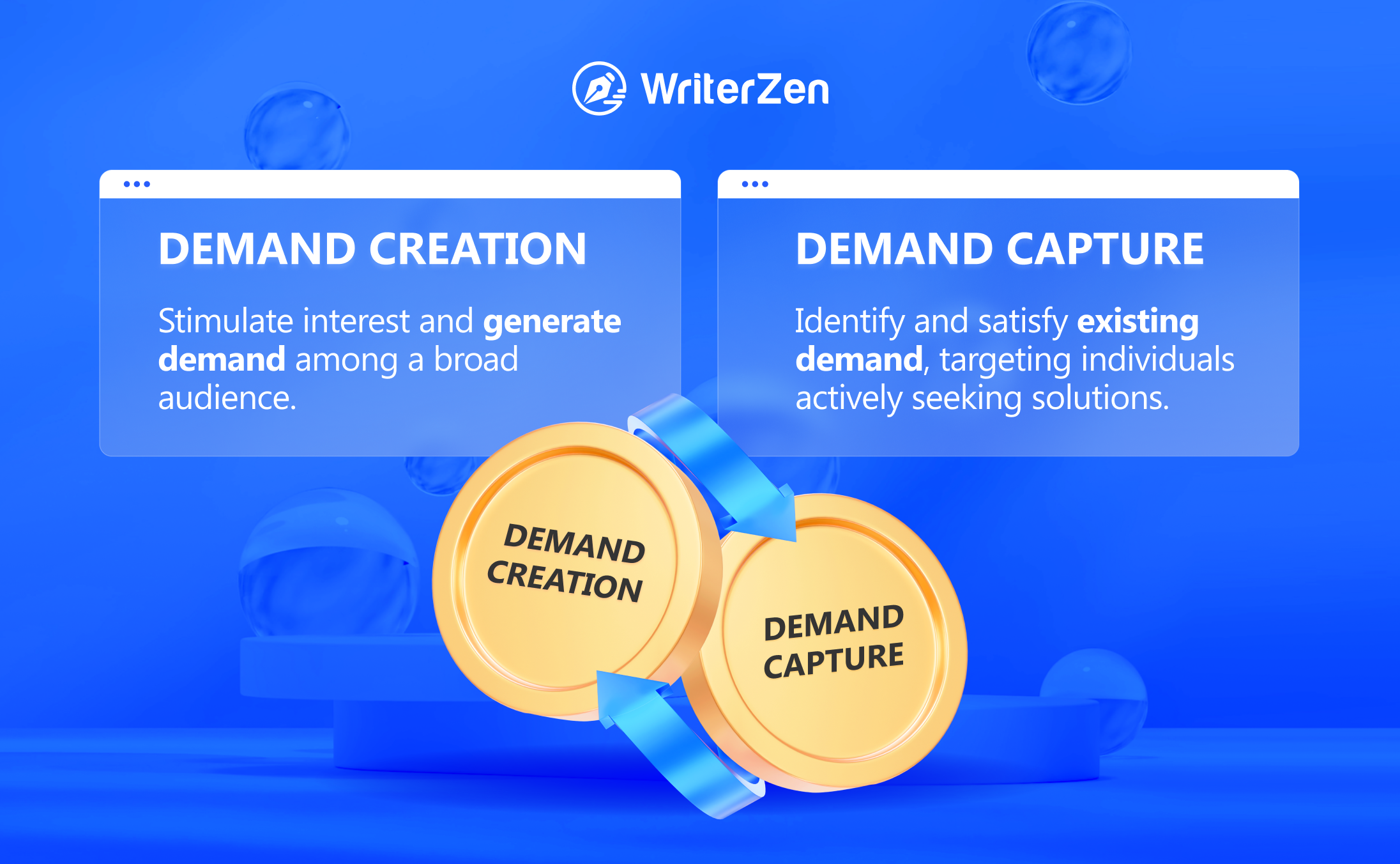
Demand creation and demand capture are like the two sides of a coin, each vital on its own.
Demand capture focuses on identifying and satisfying existing demand, targeting individuals actively seeking solutions. Capturing demand is only possible once it has been created, making the companies that excel in demand creation the ultimate winners.
Alex Birkitt said, “A common misconception is that demand creation requires starting a completely new conversation or creating a brand new category. However, that is not always the case. Instead, businesses can tap into existing desires, pain points, and aspirations of their target audience.”
Is Demand Creation More Important than Demand Capture?
So far, you’ve learned about the differences between demand creation and capture. However, in order to help you gain a better understanding of the importance of demand creation and capture, we have given you a general rundown of how both work and when to use both.
What Does Demand Creation and Capture Involve?
Since demand creation is about generating a need or desire for a product or service, it often involves introducing a new concept or idea, educating the market, and persuading potential customers that they need or want what you have to offer.
And demand capture occurs when targeting customers who have already expressed an interest or need and persuading them to choose your product or service.
Demand creation is especially crucial when introducing a new product, entering a new market, or targeting a new audience segment. It's about creating awareness and desire, often from scratch.
On the other hand, demand capture is required in mature or competitive markets where demand already exists. It's about positioning your product as the best choice among alternatives.
Here are a few essential elements we often miss when trying to capture demand:
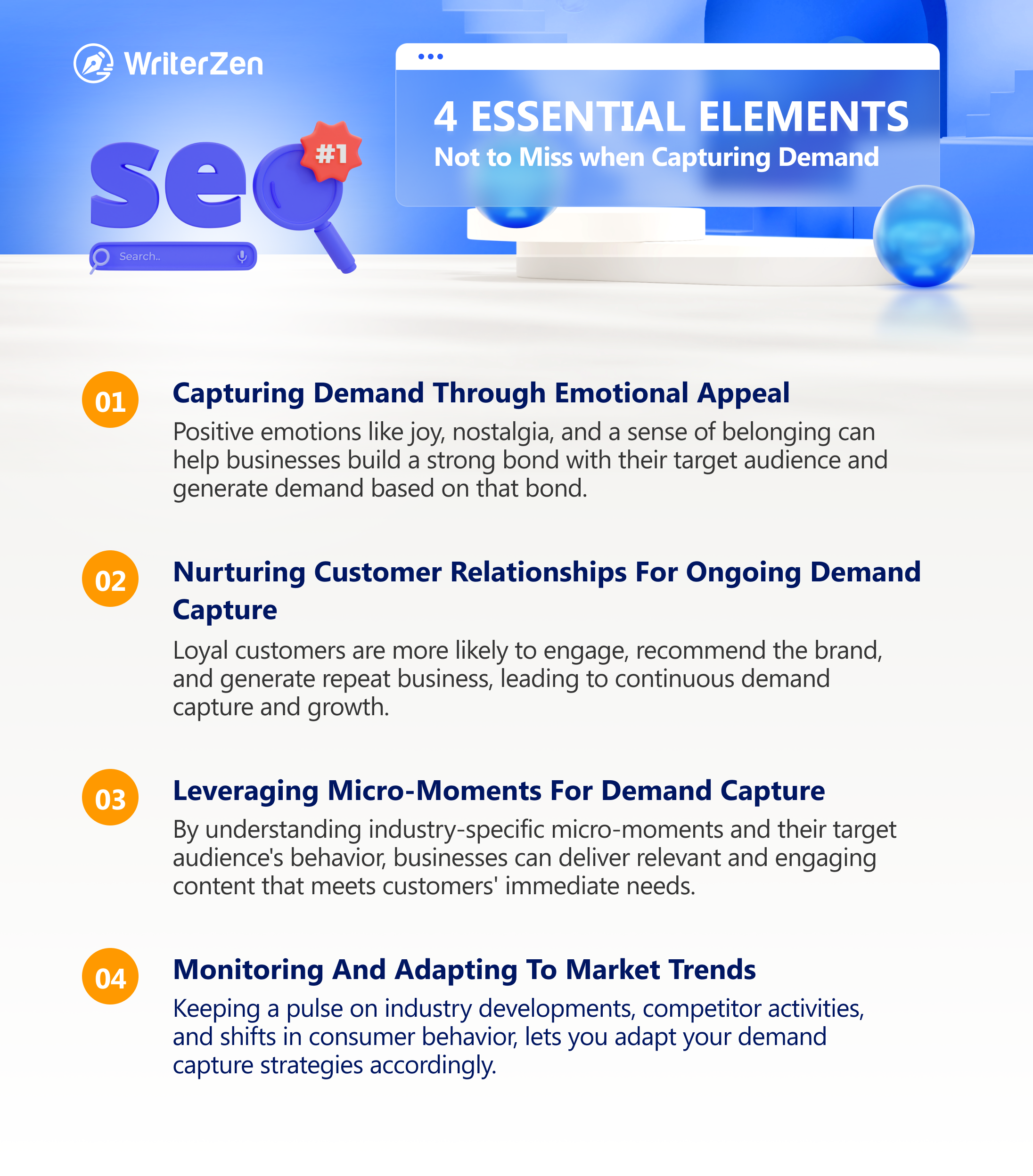
Capturing Demand through Emotional Appeal
While data and analytics are crucial in demand creation and capture, it's important not to overlook the role of emotional appeal. Connecting with customers on an emotional level can be a powerful driver of demand.
When you evoke positive emotions, such as joy, nostalgia, or a sense of belonging, businesses can create a strong bond with their target audience and generate demand based on the emotional connection they establish.
This can be achieved through storytelling, relatable content, and brand experiences that resonate with customers' emotions and aspirations.
Nurturing Customer Relationships for Ongoing Demand Capture
Demand capture is not a one-time effort; it requires ongoing nurturing of customer relationships. Building a loyal customer base is essential for sustained demand capture.
By implementing customer retention strategies, such as personalized communication, loyalty programs, and excellent customer service, businesses can foster long-term relationships with their customers.
Loyal customers are more likely to engage with the brand, recommend it to others, and generate repeat business, resulting in continuous demand capture and business growth.
Leveraging Micro-Moments for Demand Capture
Micro-moments refer to the brief instances when customers turn to their devices to fulfill an immediate need or seek information. These moments present valuable opportunities for businesses to capture demand.
When you grasp the specific micro-moments relevant to their industry and target audience, businesses can deliver relevant, timely, and engaging content that meets customers' immediate needs.
Whether it's a quick search for product information, a comparison between options, or seeking recommendations, being present and providing valuable content during these micro-moments can significantly impact demand capture.
Monitoring and Adapting to Market Trends
In the dynamic business landscape, market trends, and consumer preferences can change rapidly. To effectively capture demand, businesses must stay vigilant and monitor these trends closely.
Keeping a pulse on industry developments, competitor activities, and shifts in consumer behavior, lets you adapt your demand capture strategies accordingly.
This might involve adjusting content strategies, optimizing for emerging platforms or channels, or introducing innovative offerings that align with evolving customer demands.
Is Demand Creation Easier than Capture?
Rarely will a brand uncover an entirely new pain point; instead, they will solve a known problem in a new and innovative way. Besides that, creating demand can be expensive and time-consuming, especially when trying to break into a market with a new concept or change consumer behavior.
When identifying and addressing specific pain points, businesses can educate the market about their solutions, bridging the gap between existing demand and their offerings. Hence, it is crucial to understand the persona of the target audience and the pain point being solved to capture that demand.
How Does This All End?
On this topic, Alex Birkitt also offers his unique insight. He said, “People seem to be devaluing demand capture activities lately. This is just marketing hipsterdom. I'll take a well-executed demand capture strategy over a demand creation one any day.”
In a completely new market or with an innovative product, demand creation may be more vital, as there's a need to build awareness and interest from the ground up.
Alternatively, in a mature or saturated market, demand capture might be more crucial, as the focus shifts to competition and differentiation.
This concludes that demand creation and demand capture are both essential components in marketing, and the relative importance of each can depend on various factors such as the market, product, business model, and target audience.
Often, a balanced approach that combines both demand creation and demand capture strategies will be the most effective.
By creating demand, you expand the market or your share of the market. By capturing demand, you translate that interest into revenue.
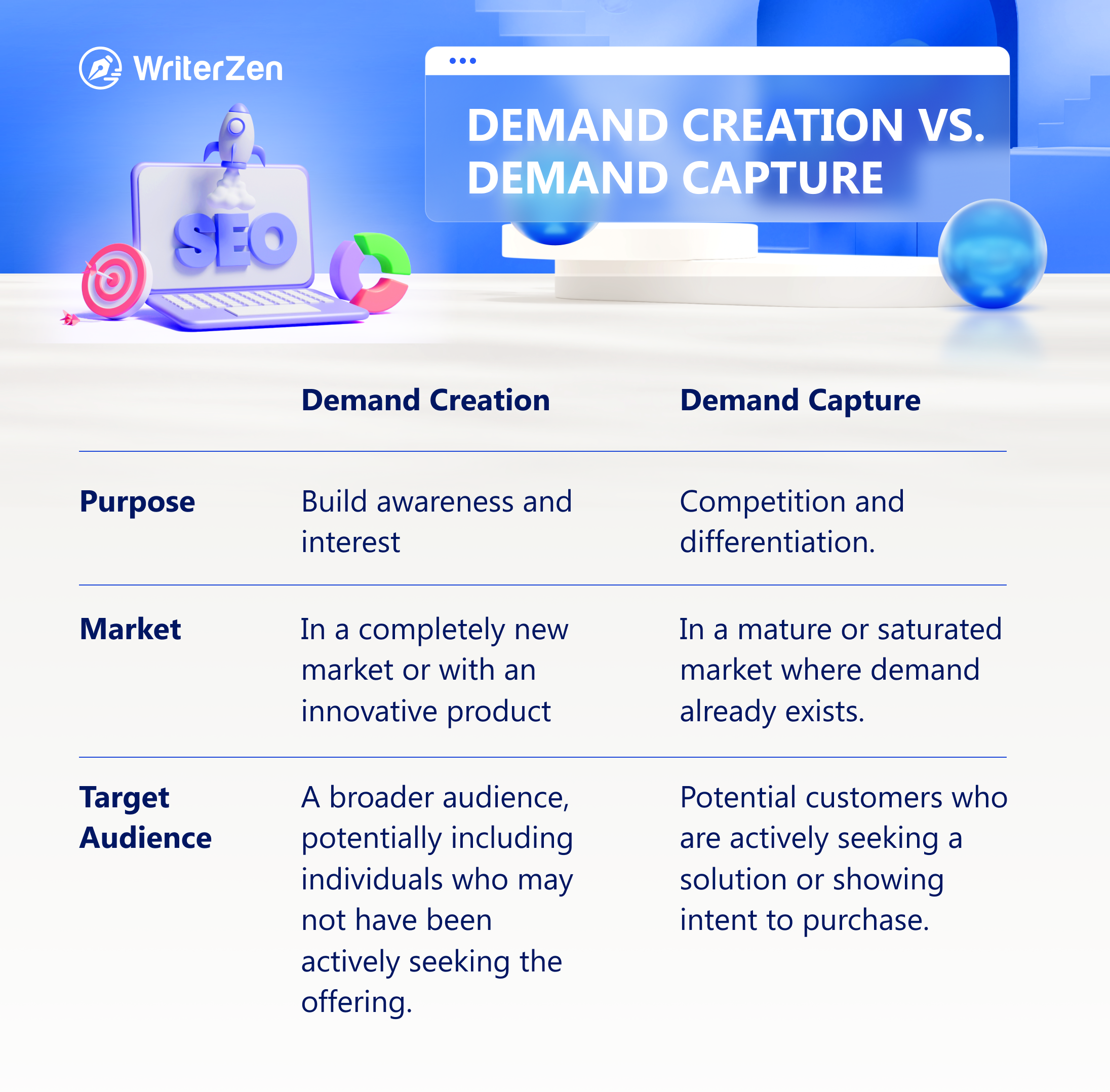
Can We Leverage SEO to Create and Capture Demand?
Let’s answer this question with a quote from Alex Birkitt.
“This is a bit pedantic, but I don't think you can really create new demand or pain points - all solutions are tackling problems humans have wanted to solve for ages. But SEO, fundamentally, is the answering of existing queries. So you can't get in front of somebody unless they already know what to ask,” explained Alex.
He also added, “You could potentially wedge your way into someone's awareness by writing a piece on a topic they'll be searching for and then introducing a new pain point in your article. But that's an ineffective use of SEO.”
Going by Alex’s unique stance on-demand creation with SEO—we arrive at the next point—leveraging SEO to capture demand. Below are some crucial boxes to tick if you want to capture search demand from your target audience.
Analyzing Search Trends and Behavior
Understanding the current search trends and consumer behavior is essential for effective demand capture.
Keeping a close eye on search trends and monitoring the behavior of your target audience allows you to identify emerging demands and tailor your content to address them.
Utilizing tools such as search engine monitoring and analytics can provide valuable insights into the evolving interests and preferences of your audience, allowing you to stay ahead of the curve and capture demand at its peak.

Embrace the Power of Long-Tail Keywords
When it comes to demand capture, long-tail keywords can be a game-changer. While high-volume generic keywords may attract a large number of searches, they often face intense competition.
On the other hand, long-tail keywords are more specific and less competitive, allowing you to target a niche audience with higher purchase intent. By optimizing your content for relevant long-tail keywords, you can capture the attention of highly motivated potential customers and drive conversions.
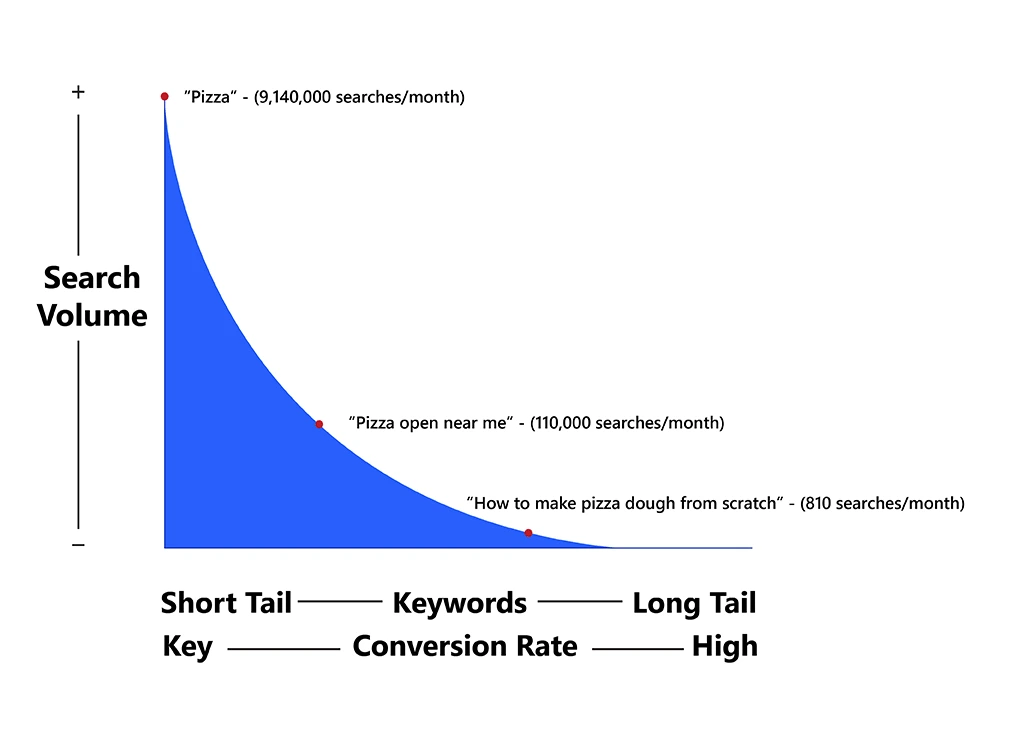
Creating Compelling and Value-Added Content
To capture demand effectively, businesses must go beyond simply providing information. It is crucial to create compelling and value-added content that resonates with your target audience.
When you address their pain points, answer their questions, and offer unique insights, you can position yourself as a trusted authority and build a loyal customer base.
Engaging content that provides real value not only captures demand but also encourages repeat visits and referrals, further amplifying your reach and impact.
Leveraging Social Media for Demand Capture
In today's digital age, social media platforms serve as powerful channels for demand capture. By understanding your target audience's social media habits and preferences, you can create compelling content that resonates with them.
You can engage with your audience through social media, sharing relevant content, and participating in discussions can help you capture their attention, build brand awareness, and drive traffic to your website.
Integrating social media into your demand capture strategy can amplify your reach and generate valuable leads.
Personalization and Customer Experience
In the era of personalized marketing, catering to individual customer preferences and delivering exceptional experiences can greatly enhance demand capture.
With customer data and segmentation, businesses can tailor their content, offers, and messaging to specific audience segments, ensuring maximum relevance and resonance.
Providing a seamless and personalized customer journey, from the initial search to the final purchase, enhances customer satisfaction and increases the likelihood of capturing demand and fostering long-term customer loyalty.
Leveraging User-Generated Content
User-generated content (UGC) has become a powerful organic traffic force in demand capture. Encouraging your customers to share their experiences, reviews, and testimonials creates authentic and relatable content that resonates with your target audience.
UGC serves as social proof, showcasing the value and benefits of your products or services. By leveraging UGC, you can tap into the power of peer recommendations and capture demand through the influence of satisfied customers.
Understanding Search Intent
Before obsessing over SEO and whatnot, if you focus more on understanding your target audience’s (human beings’) search intent, you’ll see a massive difference in your SERP positioning. Doing this aligns with what Google sees as relevant, and it drastically increases your content’s chances of ranking higher.
Masterclass is a brand that has achieved success with the intent to optimize traffic by understanding search intent and linking to specific products that match the TOFU (Top of the Funnel) problem.
Need a tool that can better help you understand the search intent?
WriterZen’s Wildcard search is a unique feature that uses an asterisk (*) to reveal (usually unknown) intents associated with a keyword.
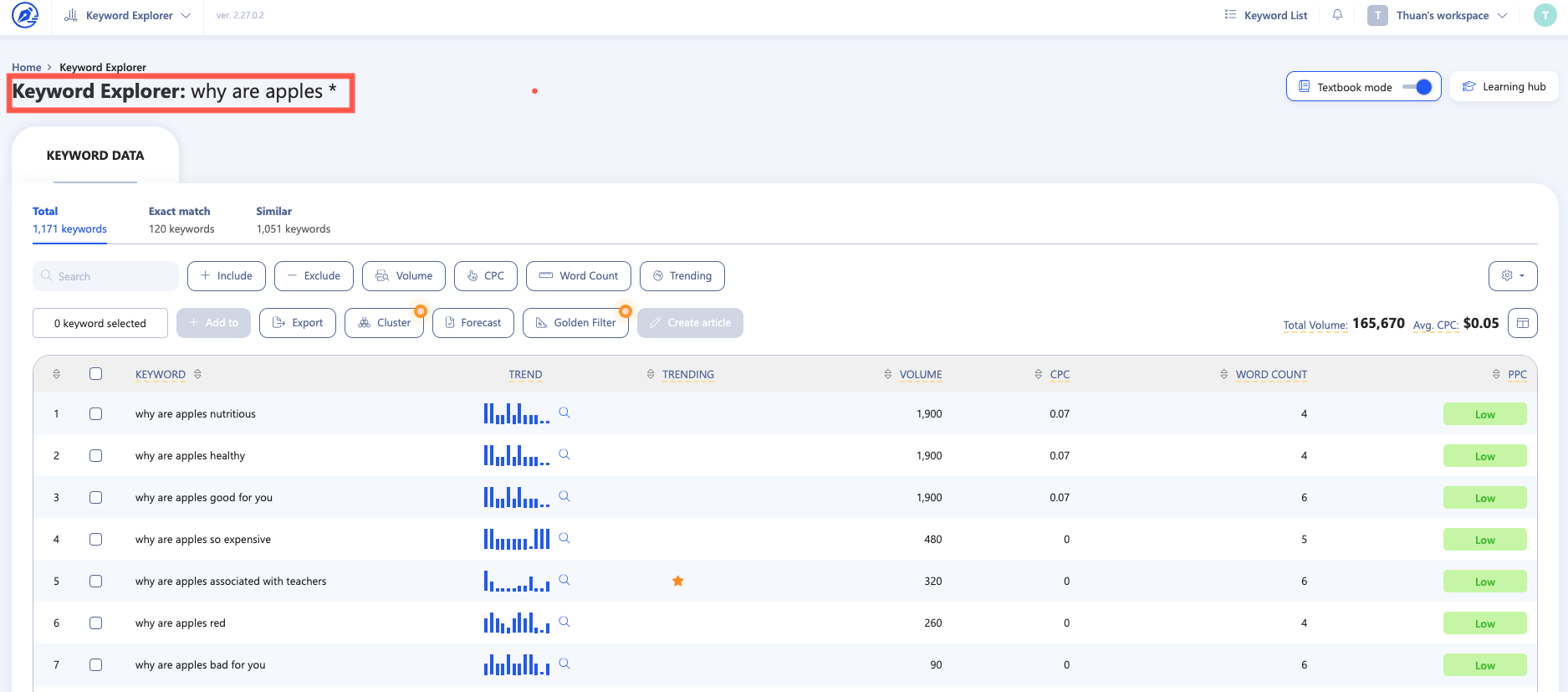
Embracing Data-Driven Insights
Data is the lifeblood of demand creation and capture. By harnessing the power of data analytics, businesses can gain valuable insights into consumer behavior, preferences, and trends.
Analyzing data from various sources such as website analytics, social media metrics, and customer feedback allows businesses to make informed decisions and tailor their demand capture strategies accordingly.
Data-driven insights enable businesses to understand the evolving needs and demands of their target audience, enabling them to position themselves effectively and capture demand at the right moment.
Balancing Demand Capture and Creation
While demand capture is essential for driving immediate results, you must also recognize the importance of demand creation.
By continuously innovating, introducing new products or services, and educating the market about their unique value proposition, businesses can create demand and position themselves as industry leaders.
Striking the right balance between demand capture and creation allows your business to capture existing demand while also shaping future demand and staying ahead of the competition.
Final Thoughts
As businesses navigate the dynamic landscape of demand creation and capture, SEO emerges as a powerful tool to align with consumer demands, capture their attention, and drive conversions.
When you provide valuable and informative content, you can build trust, nurture relationships, and guide potential customers through the awareness and consideration stages of their buying journey.
Solving the buyers' problems, introducing them to solutions, products, or services they may not have known they needed are all you need to do to build your moat.
So, learn to embrace the power of SEO, meet the demands of your target audience, and take steps that will redefine your business's growth and prosperity!


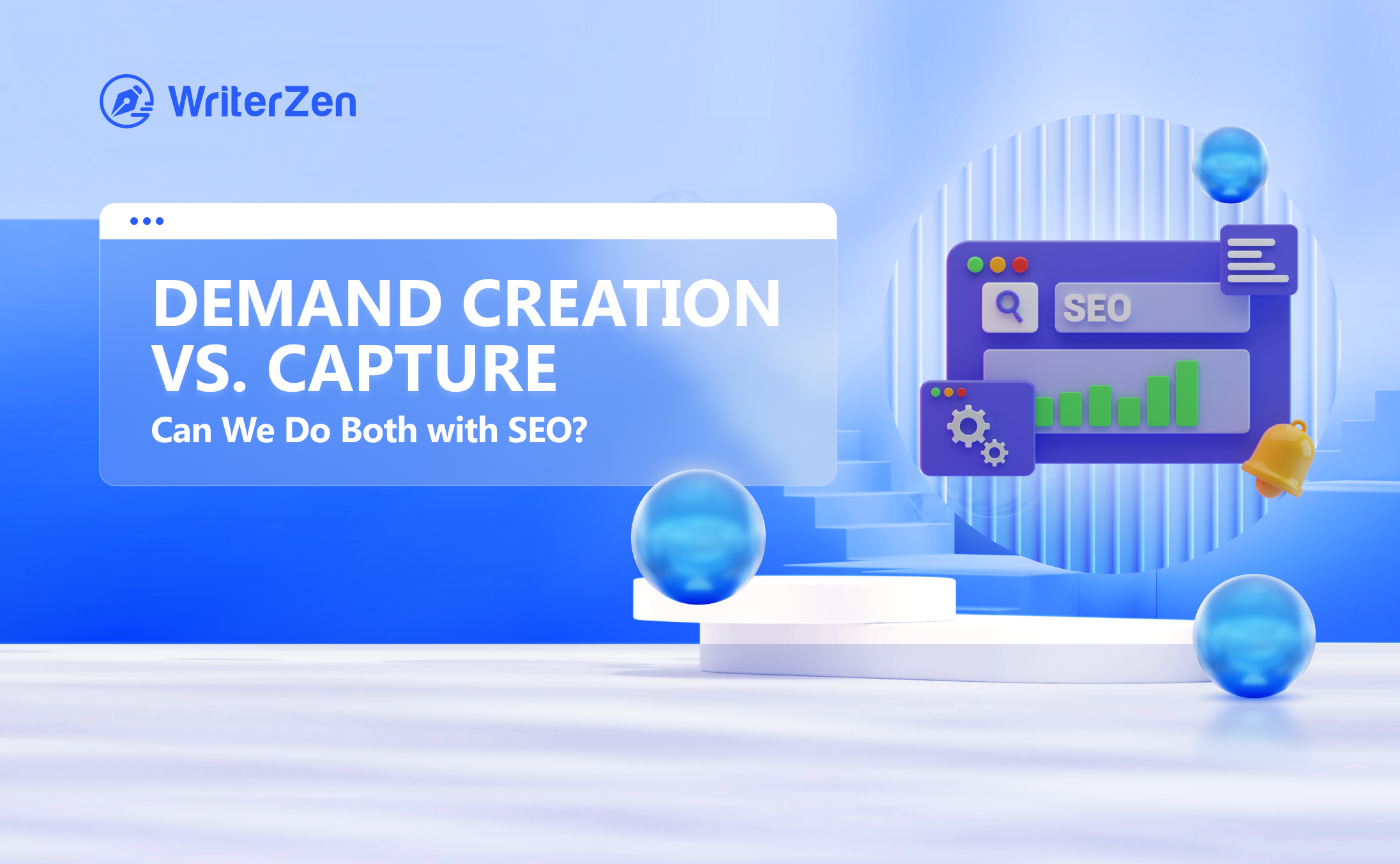
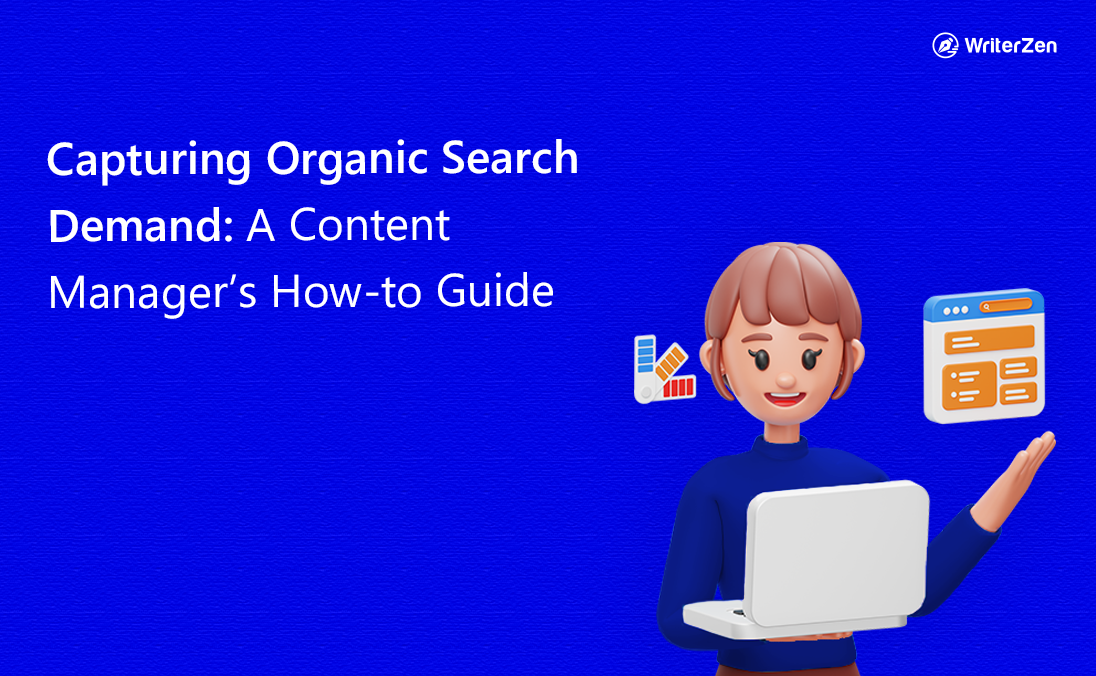
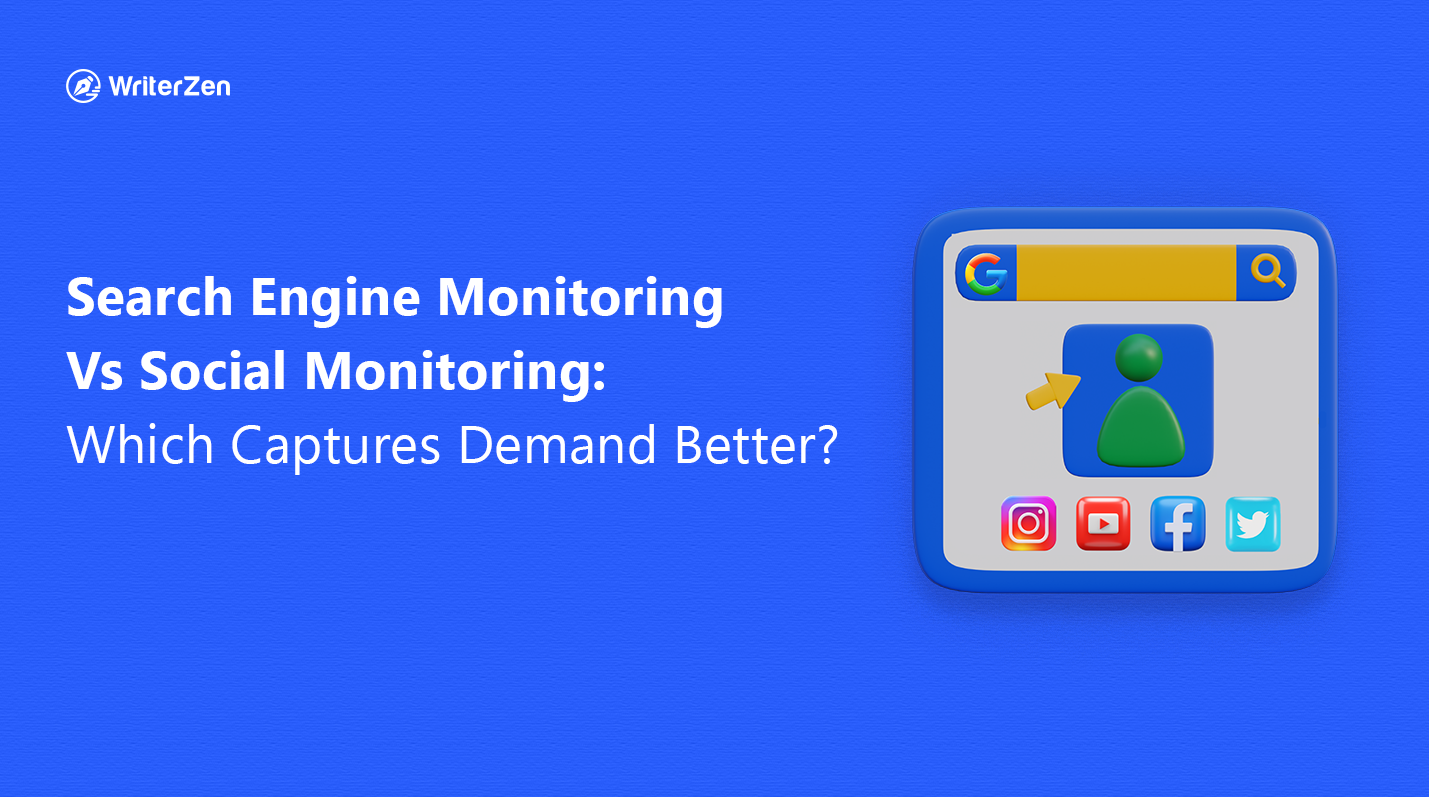

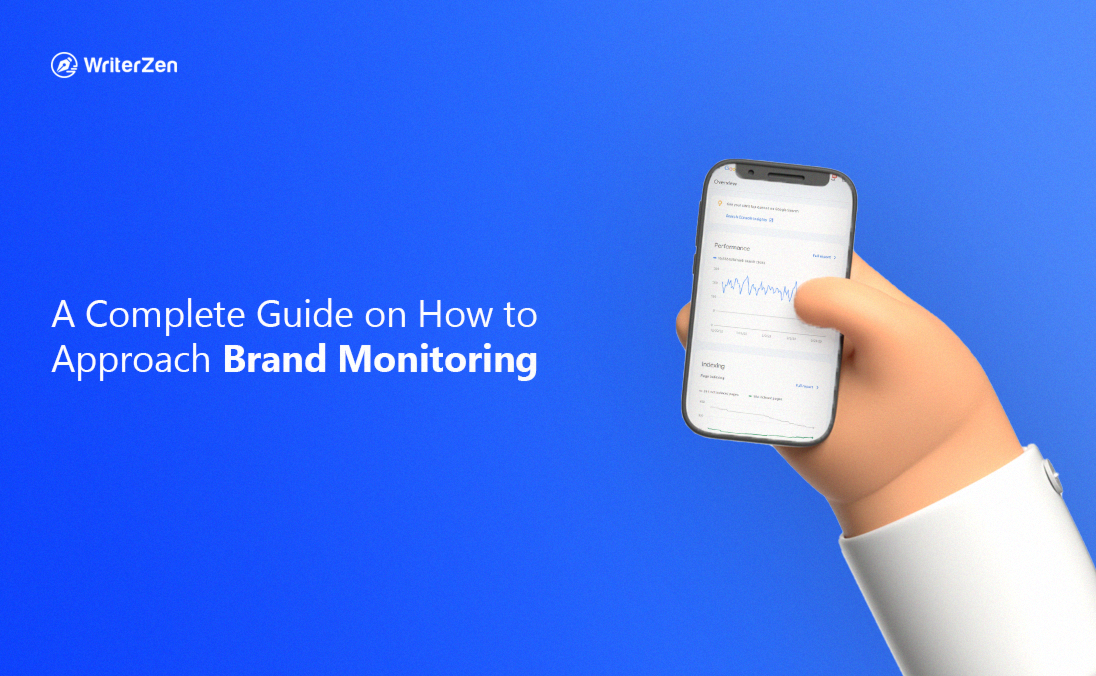


![Latest Digital Marketing Trends & How to Navigate through the Ever-Changing Marketing World [2023 Edition]](/storage/photos/1/blog-3.27/digital-marketing-trends.webp)






